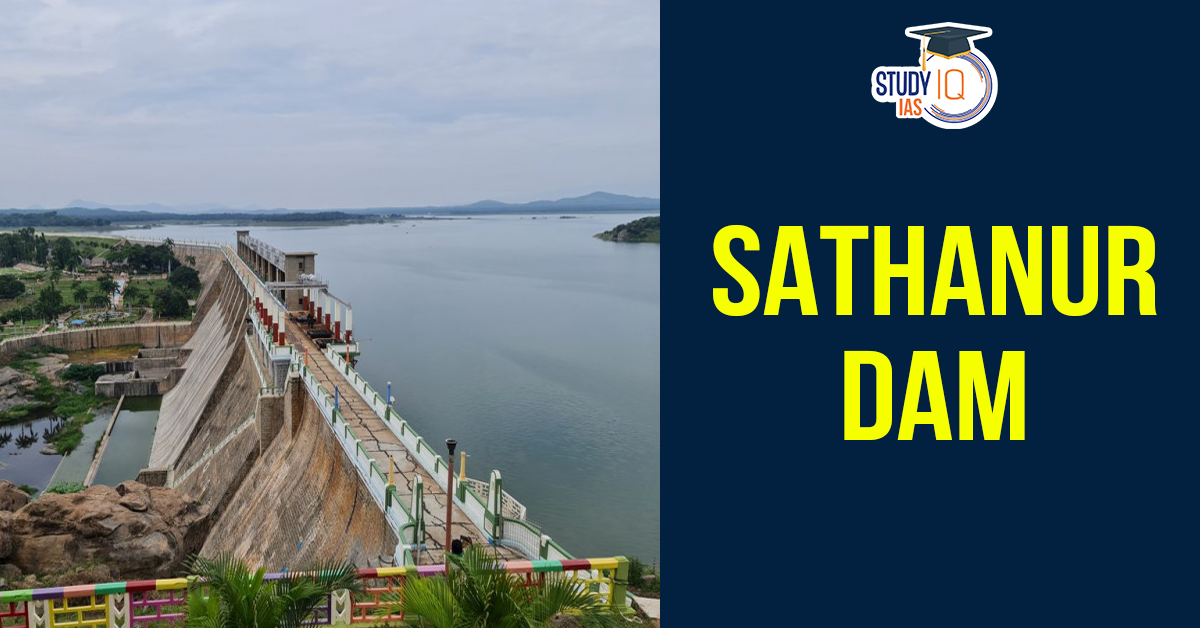Table of Contents
About Sathanur Dam
- Location:
- Constructed across the Thenpennai River (also known as Pennaiyar River) in Thandarampet Taluk, Tiruvannamalai District, Tamil Nadu.
- Year of Construction:
- Built in 1958 as part of efforts to enhance irrigation, water storage, and flood control in the region.
- Functions:
- Provides irrigation to agricultural lands in Tiruvannamalai and nearby districts.
- Supplies drinking water to villages and towns in the region.
- Supports aquaculture and acts as a tourist destination with picturesque surroundings and a crocodile farm.
Pennaiyar River
Overview:
- Alternate Names: Thenpennai or South Pennar.
- Origin: Eastern slopes of Nandidurg Mountain in the Chennakaseva Hills, Karnataka.
- Course: Flows through Karnataka and Tamil Nadu before draining into the Bay of Bengal.
Geographical Features:
- Drainage Basin:
- 77% of the basin lies in Tamil Nadu, highlighting its importance for the state’s water resources.
- Tributaries:
- Major Tributaries: Markandanadhi, Kambainallur, Pambar, Vaniyar, Kallar, and Valayar.
- Vegetation and Biodiversity:
- Mentioned in Sangam literature for its lush greenery and rich ecosystem.
Cultural and Religious Significance:
- Temples Along the River:
- Penneswaraar Temple (dedicated to Lord Shiva).
- Dakshina Tirupati (a famous Vishnu temple).
- Veerateshwarar Temple (another significant Shiva temple).
Pennaiyar River Dispute
The Pennaiyar River has been a contentious water-sharing issue between Karnataka and Tamil Nadu.
- Core Issue:
- Karnataka’s proposal to construct a dam on the Markandeya River, a major tributary of the Pennaiyar River.
- Tamil Nadu opposes the move, citing concerns over reduced water flow downstream, which would impact irrigation and drinking water supply.
- Legal and Political Developments:
- Tamil Nadu has approached the Supreme Court against Karnataka’s project.
- The dispute mirrors other interstate river conflicts like the Cauvery Water Dispute, reflecting the growing tension over water resources in India.


 Places in News for UPSC 2026 for Prelims...
Places in News for UPSC 2026 for Prelims...
 Lake Natron: Location, Features, Wildlif...
Lake Natron: Location, Features, Wildlif...
 Erra Matti Dibbalu Added to UNESCO Tenta...
Erra Matti Dibbalu Added to UNESCO Tenta...

























